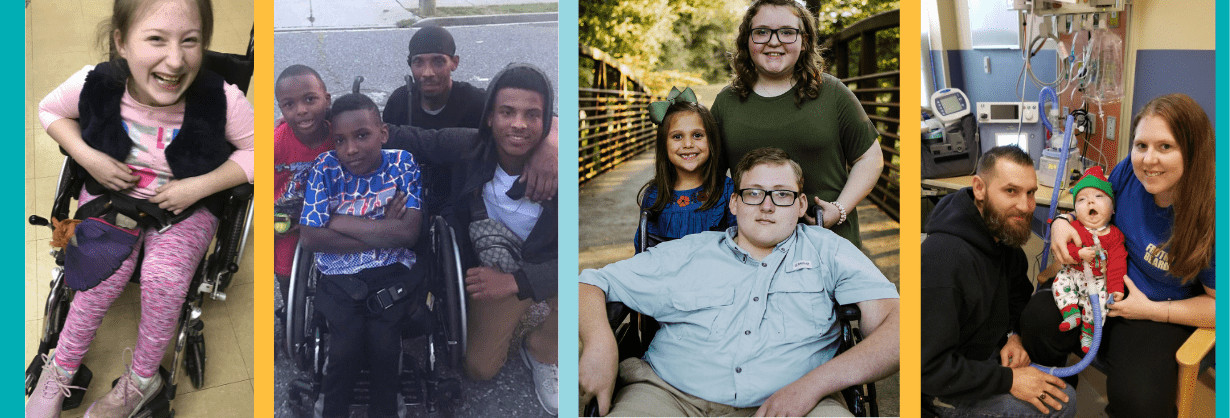
MobilityWorks
Accessibility for all: Helping people connect with who and what matters most
Searching...
No results found. Please try modifying your search.
Medical care costs from spina bifida can last a lifetime. Our nonprofit can provide financial assistance through community-based fundraising.
According to Mayo Clinic, spina bifida is a congenital disability that occurs when the spine and spinal cord don’t form the way they should. It’s a type of neural tube defect. The neural tube is the structure in a developing embryo that becomes the baby’s brain, spinal cord, and tissues enclose and protect them.
The neural tube forms early in pregnancy and closes by the 28th day after conception. In babies with spina bifida, a portion of the neural tube doesn’t close or develop correctly, causing problems in the spinal cord and the spine’s bones.
Spina bifida can range from mild to severe, depending on the type of defect, size, location and complications. When necessary, early treatment for spina bifida involves surgery — although such treatment doesn’t always completely resolve the problem.
Spina Bifida Occulta
Occulta means hidden. It’s the mildest and most common type. Spina bifida occulta results in a small separation or gap in one or more of the bones of the spine (vertebrae).
Many people with spina bifida occulta don’t know they are living with this diagnosis unless the condition is discovered during an imaging test for unrelated reasons. Several developmental issues have higher instances of occurrence among those who live with spina bifida occulta.
Myelomeningocele
The most severe type of spina bifida is myelomeningocele. This condition is frequently referred to as open spina bifida. In this instance, there is an opening along several spinal vertebrae. As a result of this opening, the membranes and spinal nerves push through the opening and create a sac with exposed tissues and nerves. This leaves the child susceptible to dangerous infections and may cause paralysis.
Meningocele
This rare type of spina bifida is characterized by a sac of spinal fluid bulging through an opening in the spine. No nerves are affected in this type, and the spinal cord isn’t in the fluid sac. Babies with meningocele may have some minor problems with functioning, including those involving the bladder and bowels.
The severity and type of condition determine the treatment for spina bifida. Below are the ways in which spina bifida is treated before or soon after birth.
Adults with spina bifida may face a wide range of medical and related expenses to maintain their health, mobility, and independence as they age. Common expenses include:
Establishing greater support for spina bifida patients is one of our goals at Help Hope Live. Through community-based fundraising, our nonprofit organization is dedicated to helping those in need raise funds for medical treatment costs associated with surgery and ongoing support for patients with spina bifida.
The fundraising process with our nonprofit starts with a few simple steps:
We are a nonprofit with more than four decades of fundraising experience and a 4-star Charity Navigator rating.
Here are a few Help Hope Live fundraising success stories:

Nick Hansberger is a well-known and well-loved member of his community and a hardworking professional with two jobs. Born with spina bifida, Nick has been experiencing deteriorating mobility and independence—by 2021, he was no longer able to walk or operate a vehicle, even with adaptive controls.
As a result of his mobility restrictions, Nick uses his motorized wheelchair to travel the mile-and-a-half to each job, even through inclement weather and physical discomfort.
His community started a fundraising campaign with Help Hope Live to bring reliable transportation within reach for Nick. They have nearly surpassed their first $50,000 fundraising goal in just four months of fundraising.
Paul Buckman was planning to retire when he fell in his bedroom and began living with quadriplegia.
Help Hope Live provided a tax-deductible, secure, and medically verified way for his community to help during a time of overwhelming need. In 2018, his family purchased an accessible van thanks to their fundraising campaign.
If you choose to fundraise with our nonprofit, here’s how the process will look:
1. APPLY for assistance
2. YOU’LL BE PAIRED with a Client Services Coordinator
3. YOUR COORDINATOR will provide you with one-on-one fundraising help, including personalized fundraising materials and guidance on how to rally your community, share your story on social media, reach out to the press, plan in-person or virtual fundraising events, and more.
Need Other Financial Help Options?
For alternatives to fundraising, you can find information on a variety of other financial assistance options. Please view our Catastrophic Illness Resource Directory for insight into sources of direct financial aid, support groups, and other resources for spina bifida patients and their families.